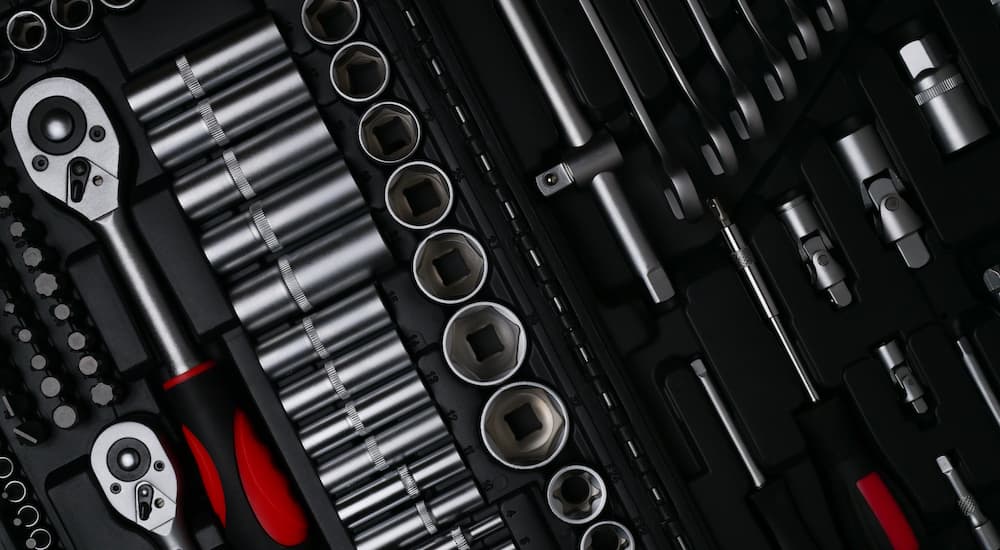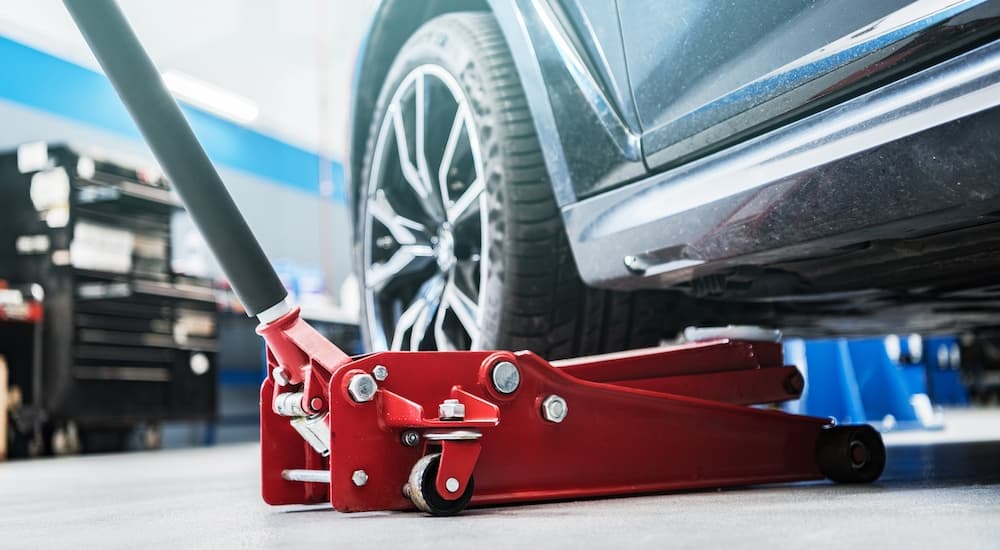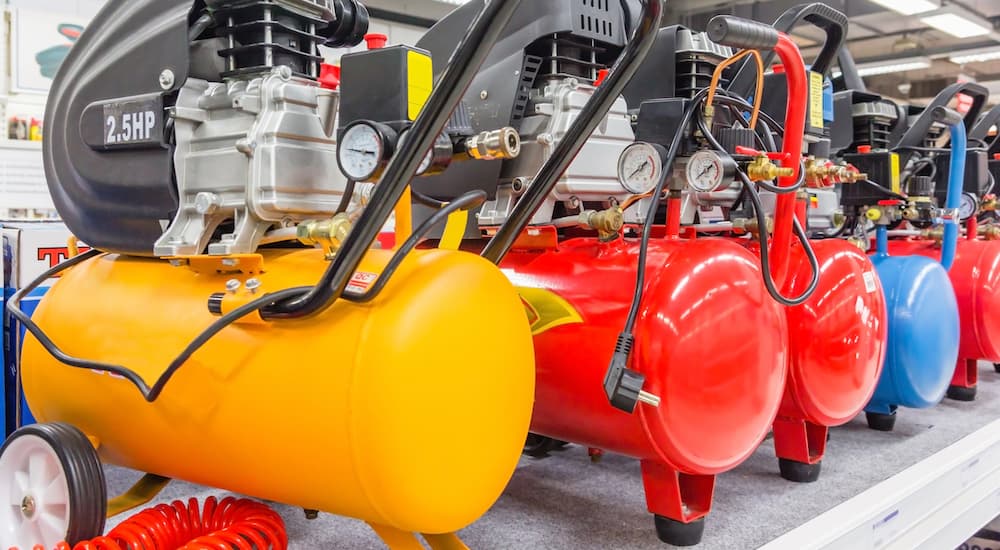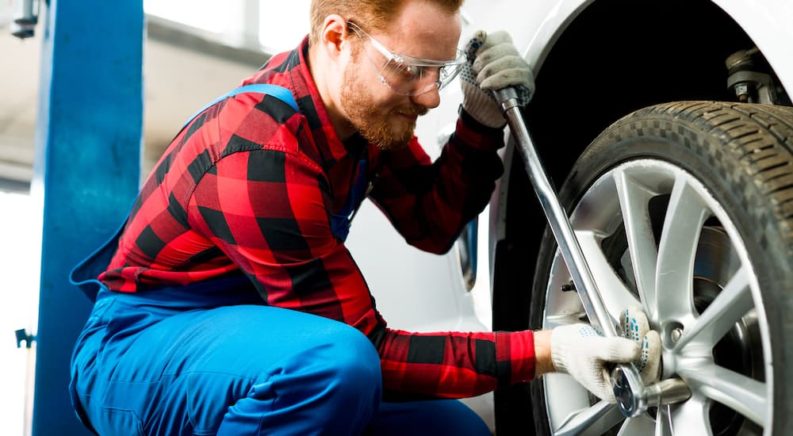Auto repairs can often be intimidating and expensive. Sometimes it feels like that check engine symbol might as well be a dollar sign for what the whole experience could end up costing you. While there are certainly some repair and maintenance jobs that are better left to the experts, you might be surprised to learn how many of these jobs can be completed at home by even the most novice of mechanics. Before you start Googling “auto repair near me,” consider investing in an at-home setup that can drastically reduce your maintenance and repair costs.
While the inner working of your local repair shop might seem like some sort of automotive black magic, it’s amazing what a can-do attitude and a familiarity with the concept of “lefty loosey, righty tighty” can accomplish when it comes to auto repairs. From tire, filter, and fluid changes to spark plugs or even just diagnosing larger issues that might call for outside help, a little DIY spirit can lead to some dramatic savings. Of course, a DIY-er is only as good as their tools, so the first step is investing in some basics to outfit your home auto shop. Below we’ve outlined some of the most essential tools for any home mechanic, from safety equipment and tools to diagnostic equipment and more; these represent a good starting point for anyone looking to take their auto repair and maintenance into their own hands.
Safety Goggles
We’re not here to lecture you, but the fact is that DIY repair won’t be nearly as economical if it ends in a trip to the hospital. Skinned knuckles are one thing, but eyes are one area where you really don’t want to be taking any chances. This is especially true for any work performed while you’re under the vehicle and prone on your back, but it’s probably a good idea to keep them on regardless of what part of the vehicle you’re working on.
Nitrile Gloves
If the mechanics at your local garage aren’t afraid to walk around the shop in bright purple gloves, you shouldn’t be either. Nitrile gloves are perfect for auto repair as they’re puncture-resistant, grippy, and most importantly: disposable. Investing in a box of gloves will also drastically reduce the amount of time you spend at the sink trying to scrub grime out from under your fingernails. If purple isn’t your color, don’t worry, as it’s now easy to find these gloves in a variety of colors.
Work Light
This one shouldn’t require too much explanation, but just in case, here’s a reminder: being able to see is an important aspect of any repair job. A simple work light can be hooked to the underside of your hood and directed to illuminate the deepest, darkest crevices of your engine compartment. A work light is designed with a cage over the bulb, making it more resistant to breakage in the unpredictable world of auto repair. They also often feature an outlet, allowing these lights to basically double as an extension cord for other tools.

Socket Wrench Set
The bread and butter of auto repairs, a good socket wrench set is essential for any home garage. The ratcheting action of a socket wrench is perfect for auto repair work where space is often too tight to accommodate a typical wrench. Available in both metric and standard SAE formats, a good socket wrench set will feature a number of accessories aside from the standard sockets to aid in completing all manner of repairs. These include driver sockets for Phillips and flathead screws, spark plug sockets, and extension bars for reaching into the deeper recesses of your engine compartment.
OBDII Scan Tool
The check engine light means your vehicle is trying to tell you something, but unfortunately, you don’t speak the same language. That’s where an interpreter comes in handy. An OBDII scan tool is an invaluable resource for any home mechanic, allowing you to translate the diagnostic trouble codes (DTC) your vehicle throws off when something is wrong. Most auto parts stores have a purpose-built box you can hook up to your vehicle, but these often just display the error code itself without any additional context or information. The modern prevalence of the smartphone has changed the game entirely, allowing drivers to buy OBDII readers for as little as $20, which then communicate with phone-based apps to deliver a wealth of relevant info: everything from the code itself to expected driving impact and repair cost. These can also be used to run some diagnostics on the vehicle, including RPMs, calculated engine load, and a number of part-specific voltages, all of which can be helpful in diagnosing some more complex automotive issues.
Oil Catch Pan
Changing your own oil is one of the easiest and most basic DIY tasks out there, but it can get a little messy. While there’s nothing wrong with jury-rigging a catch pan out of any sufficiently deep metal pan, a good oil catch pan can make the whole process a lot easier. Many of these pans are now made of plastic with a hollow interior, plug, and spout, which allow drivers to drain directly into a sealable container. This handy helps to prevent spills when disposing of used motor oil, allowing you to earn that grease monkey cred without any of the, well, grease.
Breaker Bar
Sometimes you need to put subtly and craft aside and just let the raw muscle do the work. Breaker bars are designed to loosen nuts and bolts that just won’t budge, with long handles providing plenty of torque and a solid, simple design that won’t break under pressure. These are most often used to remove lug nuts when changing tires, which often need a little extra help getting started.

Jack and Jack Stands
Aside from repair work performed under the hood, nearly every other auto repair task will require you to get under the vehicle itself. With that in mind, a quality jack and jack stand should be one of your first purchases when building an at-home auto shop. The jack itself is sufficient for tasks like replacing tires, but it’s specifically designed to lift heavy loads, not hold them in place. That’s where jack stands come in. Purpose-built to provide a steady, reliable way to prop up your vehicle, they’re essential when you’re undertaking any projects that involve putting your very crushable human body under a 2-ton hunk of metal. Just make sure your jack and jack stands are both rated for the specific weight of any vehicles you might be working on.
Torque Wrench
A torque wrench is a must-have for any home mechanics looking to perform tire changes. Torque wrenches might look like regular wrenches, but they’re more like calibration tools and are commonly used to ensure nuts, bolts, and screws are tightened to a very specific level. A needle, dial, or digital display gives you the ability to see just how much pressure is being applied to a fastener so it can be tightened to the ideal level. But why is this important? Loose lug nuts are an obvious hazard, but over-tightening lug nuts can be almost as dangerous as it can strip or damage them. You might be able to get away with not using one when installing a spare tire in an emergency situation, but for all other types of tire changes, it’s an essential tool. Torque wrenches are used for a few other far more complex repair jobs, including work to suspension and steering components, but it’s worth the investment for tire changes alone.
Roller Seats or Creeper
More of an ergonomic investment than anything else, this wheeled, padded contraption will make almost every repair easier simply by making it more comfortable. A roller seat or “creeper” allows you to slide under the vehicle with ease and often features an adjustable headrest that will go a long way in preventing a stiff, strained neck. It might be easy to write this off as a luxury beyond the needs of a DIY-er, but just ask any mechanic: the more comfortable you are, the more patience you’ll have, and the better you’ll be able to perform repairs. Some newer models are even able to convert into a rolling stool which can be pressed into service all around the shop.
Repair Manual
The owner’s manual that came with your vehicle is a good starting point to learn about your vehicle’s various functions, systems, and how to perform basic maintenance, but it’s not very handy when it comes to real repairs. After buying a new vehicle, a repair manual should be your first purchase (after insurance). These tomes cover specific makes and models within a certain manufacture date, giving incredibly specific instructions on how to perform nearly every repair that might be called for, as well as providing electrical diagrams and diagnostic trouble codes (DTC). Layouts and components can vary even within the same make and model owing to factors like varying engine sizes, but these manuals provide guidance for every permutation.
There are two major players in the repair manual game: Haynes and Chilton. Both are exceedingly comprehensive but differ in their approach. Haynes manuals are often more visually focused, featuring more photos and generally doing a better job of explaining not just the “how” but the “why” for many repair jobs, which can be helpful for the less auto-literate among us. Chilton manuals are more text-heavy, and while they get into very fine detail, they might be a little overwhelming for those who are relatively new to the DIY scene. These manuals typically run between $25 and $30, meaning they’ll likely pay for themselves as soon as you’ve completed your first DIY repair. While you might sometimes long for a clearer picture of more succinct directions, web searches can often help fill in some of those gaps.
Multimeter
While we usually think of “auto repair” in terms of mechanical components, your vehicle’s electrical system is just as susceptible to breaking down. It might seem intimidating, but in many ways, the electrical system is simpler to understand than some of the more complex mechanical systems. Most repair manuals or web searches will turn up an electrical writing diagram for your specific make and model, making it a lot easier to track down the issue. The multimeter is the most important tool for any electrical work as it allows you to measure the flow of electricity throughout the vehicle. It can be used to test batteries and fuses and check if certain components or wires are receiving power, allowing you to do a little detective work before springing for a potentially costly repair. Electrical problems can be time-consuming to track down, so you might as well do a little of the legwork before handing it over to someone who charges by the hour.

Air Compressor
This one might be a bit of a splurge, but the convenience it provides makes it a welcome addition to any mechanic’s setup. An air compressor can not only be used to inflate tires but power a number of pneumatic tools that take a lot of the huffing and puffing out of some common auto repair tasks. These compressors drive the torque air impact wrenches that make removing and installing tires a breeze, and lubricating hard-to-reach spots is easier than ever with an air-powered grease gun. The compressor has applications far beyond the auto world, including nail guns and paint sprayers, so if you’re a DIYer beyond the garage itself, consider making the investment. If you’re looking to start small, a simple air pump capable of inflating your tires can be found for as little as $30 to $40.

